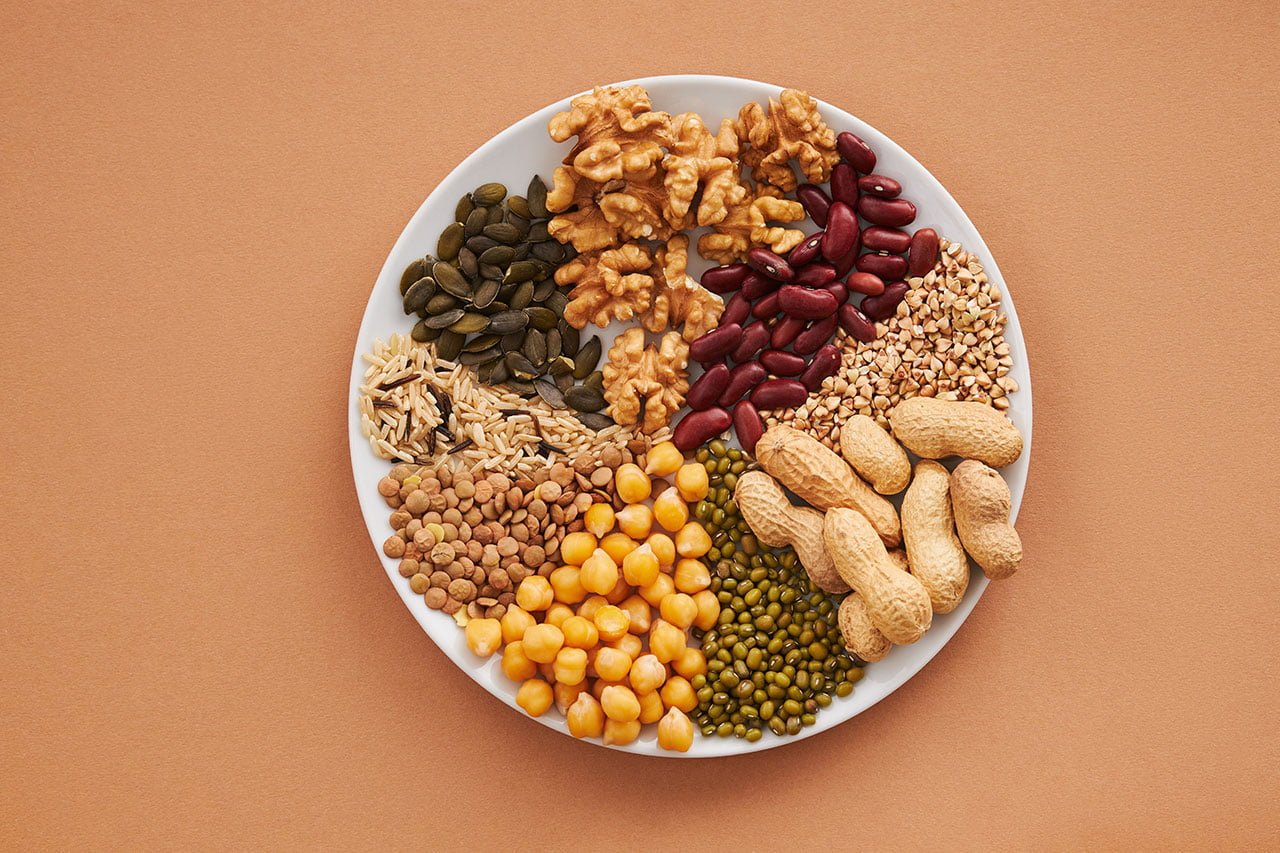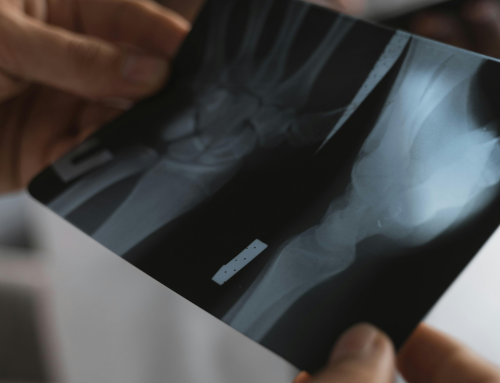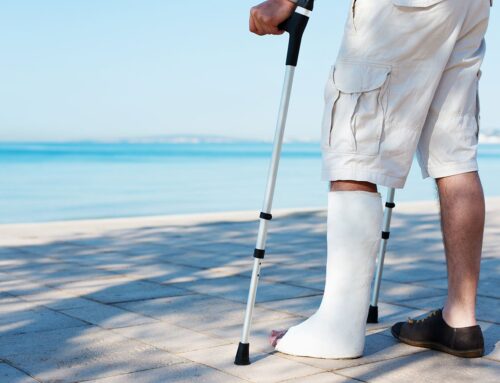Diet is a major consideration in any conversation about bone health. A diet rich in calcium and vitamin D contributes to good bone health. When dairy is off the menu, ensuring a diet containing calcium-rich foods and vitamin D is essential to maintaining strong, healthy bones.

Bones are incredible storage systems for the body
Bones store essential nutrients and minerals. Most notably, calcium with the help of vitamin D. In fact, 99% of the body’s calcium is stored in the bones. Vitamin D, the sunshine vitamin, is essential for calcium absorption and bone mineralization. When there is a surplus of calcium, the body eliminates the excess. Importantly, when there is a shortage of calcium, the body will use calcium stored in the bones.
Healthy strong bones through diet
Along with exercise and a balanced lifestyle, diet is a major contributing factor to overall bone health. Maintaining excellent bone health minimizes risks of common bone diseases, such as osteopenia and osteoporosis. A diet without enough calcium, vitamin D and other bone-building nutrients, minerals, and vitamins may lead to bone weakness and make bones more susceptible to fractures and breaks.
Calcium also plays a big part in overall health. Not only is calcium essential in maintaining bone density and stimulating bone health, but it is also necessary to stabilize blood pressure, perform muscle contraction, and control heart and nerve function. It is also important in bone healing and renewal.
Non-dairy choices for a calcium-rich diet
Although many dairy products contain or are fortified with calcium, vitamin D and other essential nutrients, dairy is not enjoyed by all. Fortunately, there is a vast array of choices for ensuring a calcium-rich and bone-health-stimulating diet.
Recommended calcium intake
The daily recommended intake of calcium ranges between 800 mg and 1000 mg for healthy adults. This recommendation increases, for women over 50 and men over 70, to up to 1200 mg. A single cup of milk has about 300 mg of calcium. This can easily be substituted with a glass of fortified orange juice as it has the equivalent 300 mg of calcium. Similarly, one cup of soy, rice, or almond milk may have as much or more calcium. For perspective, just 2 tablespoons of blackstrap molasses has 360 mg and 2 tablespoons of tahini (sesame seed butter) has 120 mg of calcium.
Not all calcium is the same
There are many contributing factors regarding how much calcium is absorbed by the body. Some dietary sources of calcium are absorbed better. Not only that, but other foods may contribute to calcium loss or excretion. Diets that may contribute to calcium loss are diets high in salt, sugary snacks, soft drinks, as well as processed foods.
For those avoiding dairy, the good news is that there is more and more evidence that high dairy consumption may in fact lead to increased fracture risk. Across multiple studies and schools of thought on bone health, the common theme on developing healthy bones are diverse calcium sources paired with balanced lifestyle choices and optimal exercise. Increase each of these even slightly to gain overall and long-term benefits for the bones.
Calcium-rich and bone-health-stimulating foods
Whole foods are one of the best ways to introduce sources of non-dairy calcium into the diet. This is because, along with comparable high quantities of calcium, whole foods also contain minerals and micronutrients. These minerals, such as boron, manganese, zinc, and copper, contribute to overall bone health.
Beans and legumes
A cup of cooked chickpeas contains about 110 mg of calcium while soybeans can contribute as much as 260 mg of calcium to the diet. Soybeans are also the main ingredient in tofu, which holds up to 860 mg of calcium per cup. Increasing beans and legumes into the diet is easy and adds a substantial amount of nutrition in the form of plant-based proteins and fiber. Bean recipes abound for salads, soups, main dishes, and pilafs.
The best way to increase beans and legumes in the diet is to find the most enjoyable ways to consume them. For those who love central and south American cuisine, refried beans and bean dips are an exciting way to enjoy beans. Beans are loved in the Mediterranean diet in the form of salads and humus. Another way to increase beans and legumes is to take a favorite tried and true recipe and add extra beans. A favorite soup becomes a hearty meal just by adding a simple can of a favorite bean.
Seeds and nuts
Nuts and seeds are packed full of nutrition including healthy fats, proteins, vitamins, and minerals. Some seeds and nuts are particularly high in calcium. For instance, 100 g of raw almond or almond butter has as much as 270 mg of calcium. Sesame seeds hold an incredible 960 mg of calcium in raw, toasted, and tahini (sesame paste) form in each 100 g.
A little goes a long way with seeds and nuts. Adding a few nuts to snacks or as part of a healthy breakfast is one way to incorporate more seeds and nuts into the diet. Nut butters such as almond butter and seed pastes like tahini may increase the calcium absorption. This is because they don’t rely on chewing the whole nut and seeds to release the digestible minerals. Keeping nuts and seeds readily available to add to salads, smoothies, baking, breakfast cereals, and snacks is a great way to up the nutrition and calcium intake.
Greens
Dark green leafy vegetables such as collard greens, broccoli, spinach, and kale are at the top of every nutrient-rich diet. Not only do they hold a wonderful array of nutrients, but they also contain considerable amounts of calcium. Cooked collard greens, for example, contain 133 mg of calcium per ½ a cup and ½ cup of cooked spinach has 122 mg.
Adding dark green leafy vegetables to the diet can be a bit challenging. This is because they are perishable, and they don’t appeal to everyone. Having chopped and frozen dark green vegetables on hand to drop into soups, stir fries, sauces, pastas, or stews is one way to top up on greens in the diet. If there is a need to resort to sneaking greens into foods, they go largely unnoticed in smoothies and baked goods.
Fruits and vegetables
Surprisingly, fruits and vegetables contain lots of calcium in addition to their high nutrition value. Just 10 dried figs, for example, carry 150 mg of calcium, while 2/3 of a cup of raisins has 54 mg. Aside from the dark green leafy vegetables listed above, many other vegetables provide calcium. A cup of peas has 94 mg of calcium. Squash and sweet potatoes run in the 80 mg to 90 mg of calcium per cup.
For great ways to increase your fruit and vegetable intake, look at the half your plate movement.
Fortified foods
Calcium and vitamin D intake is a concern for some portions of the population. This has led to many foods being fortified with calcium and vitamin D. From fruit juice to cereals, non-dairy milk, and pasta products, many of the foods we consume are fortified.
If reaching the daily goal of calcium and vitamin D is unavailable through a non-dairy diet alone, a wonderful alternative is to look for products that are fortified with these essential nutrients. Simply review the nutrition information on the product label to see how much calcium and vitamin D the product will provide towards the daily intake requirement.
Calcium and vitamin D supplements
Through diet alone, even with foods fortified with calcium and vitamin D, sometimes it is challenging to meet the daily recommended amounts. A considerable variety of supplements are available. Getting a steady amount of calcium and vitamin D throughout the day may be better than a large amount all at once. Some supplement providers take this into consideration. They may make a small dose supplement to take a few times throughout the day.
Bone health takeaways
Bone health is essential for movement, and they enable people to pursue their hobbies, occupations, and interests. Along with healthy lifestyle factors and staying physically active, a diet containing calcium-rich foods goes a long way to provide good bone health. There is a vast assortment of non-dairy foods which contain high levels of calcium, which contribute to excellent bone health. Maintaining healthy bones helps to minimize risks of fractures.
In the unfortunate event of a fracture, Low-Intensity Pulsed Ultrasound (LIPUS) is proven to accelerate the healing process. In fact, Melmak LIPUS device provides a convenient 20-minute, once-a-day treatment. Safe, effective, and convenient, the clinically proven Melmak LIPUS device provides healing to fresh fractures 38% faster. It also improves delayed and nonunion healing by 86%. The Melmak LIPUS device is available through us or your health-care provider for convenient self-treatment at home to stimulate bone healing.
Contact us today to find out how a Melmak LIPUS device can provide you or a loved one with faster fracture healing.
Do you have any dairy-free, calcium-rich foods or recipes to share that have benefited your bone health? Do you have any questions about how to ensure excellent bone health through diet?
Please post your questions, thoughts, and suggestions in the comments section below.





